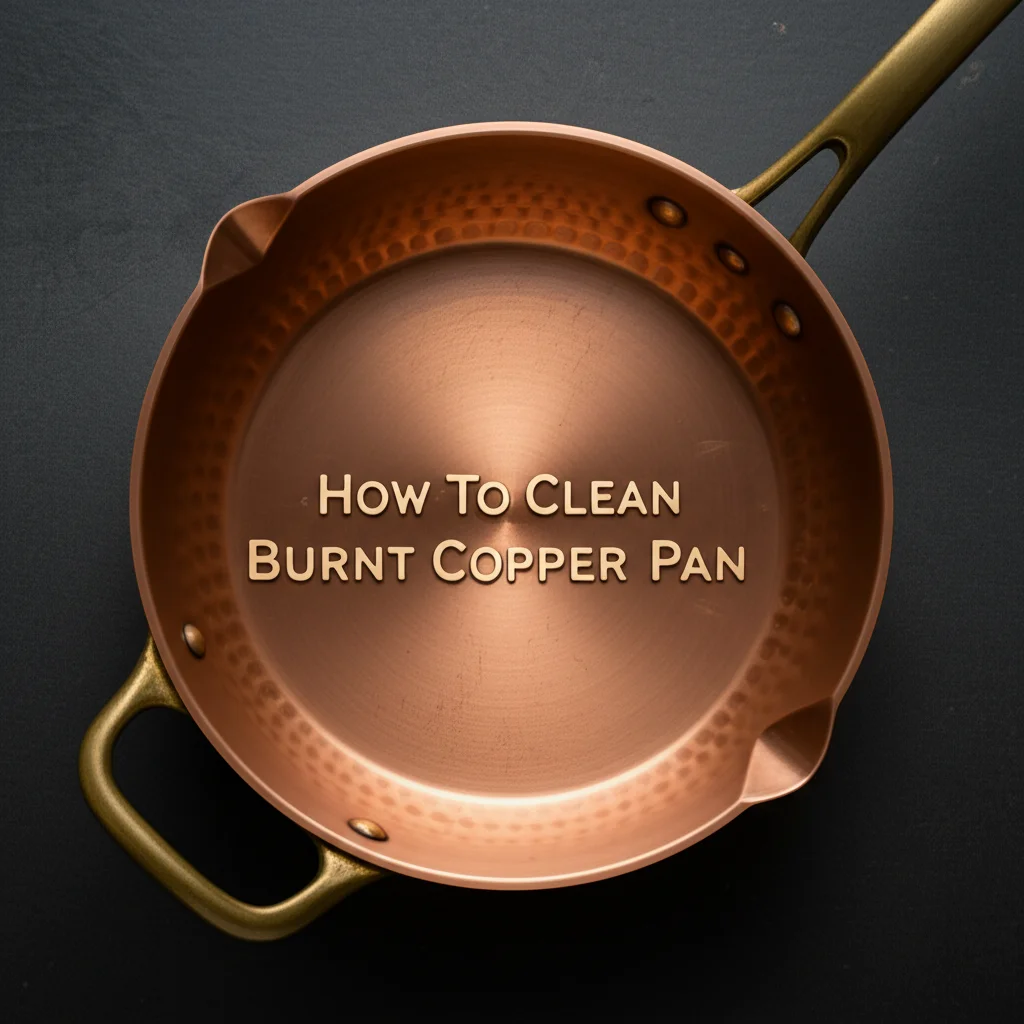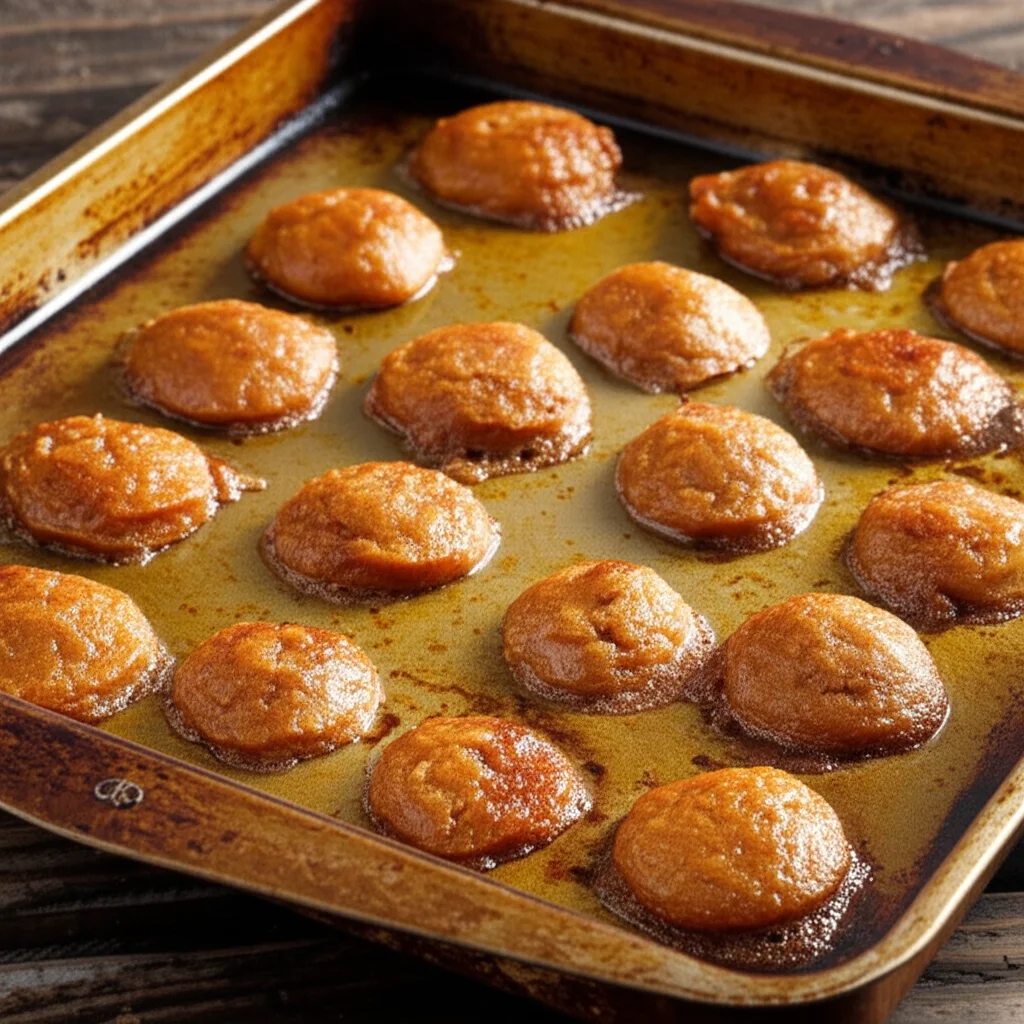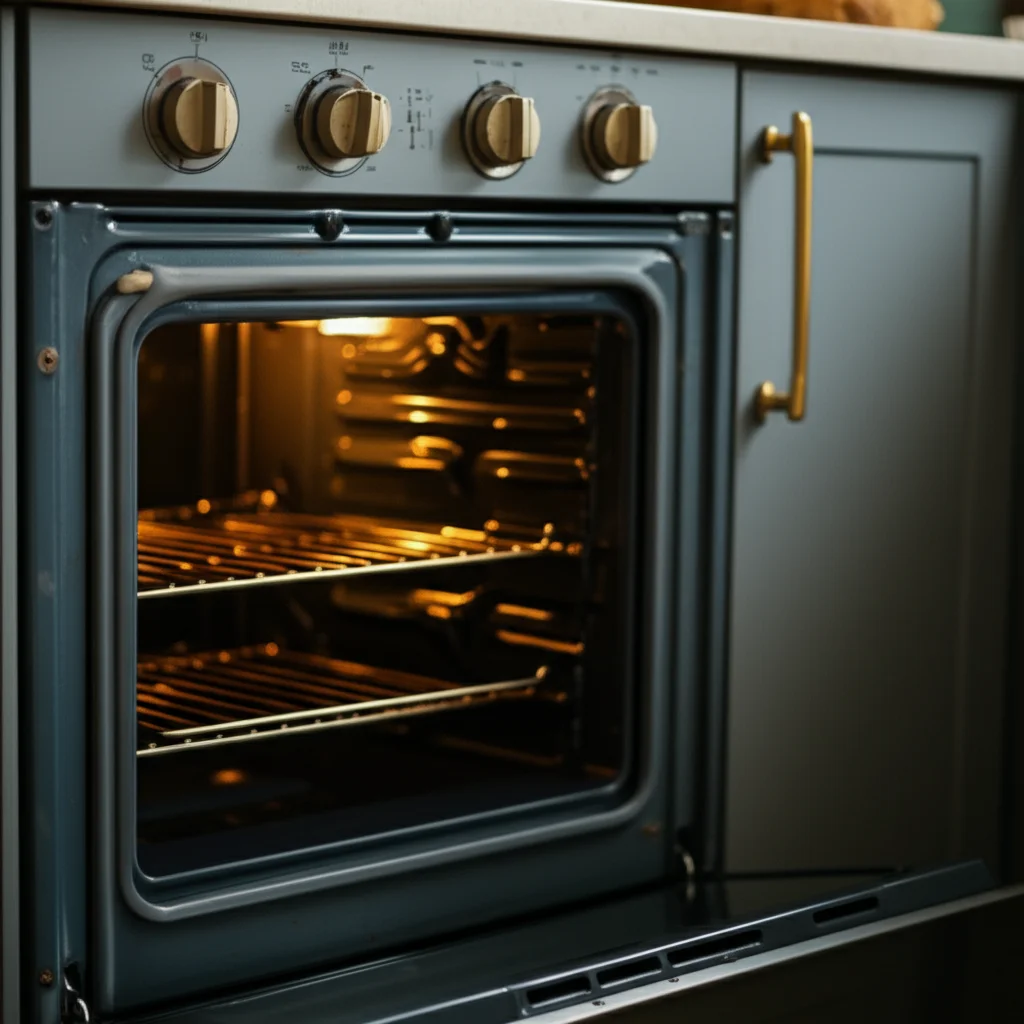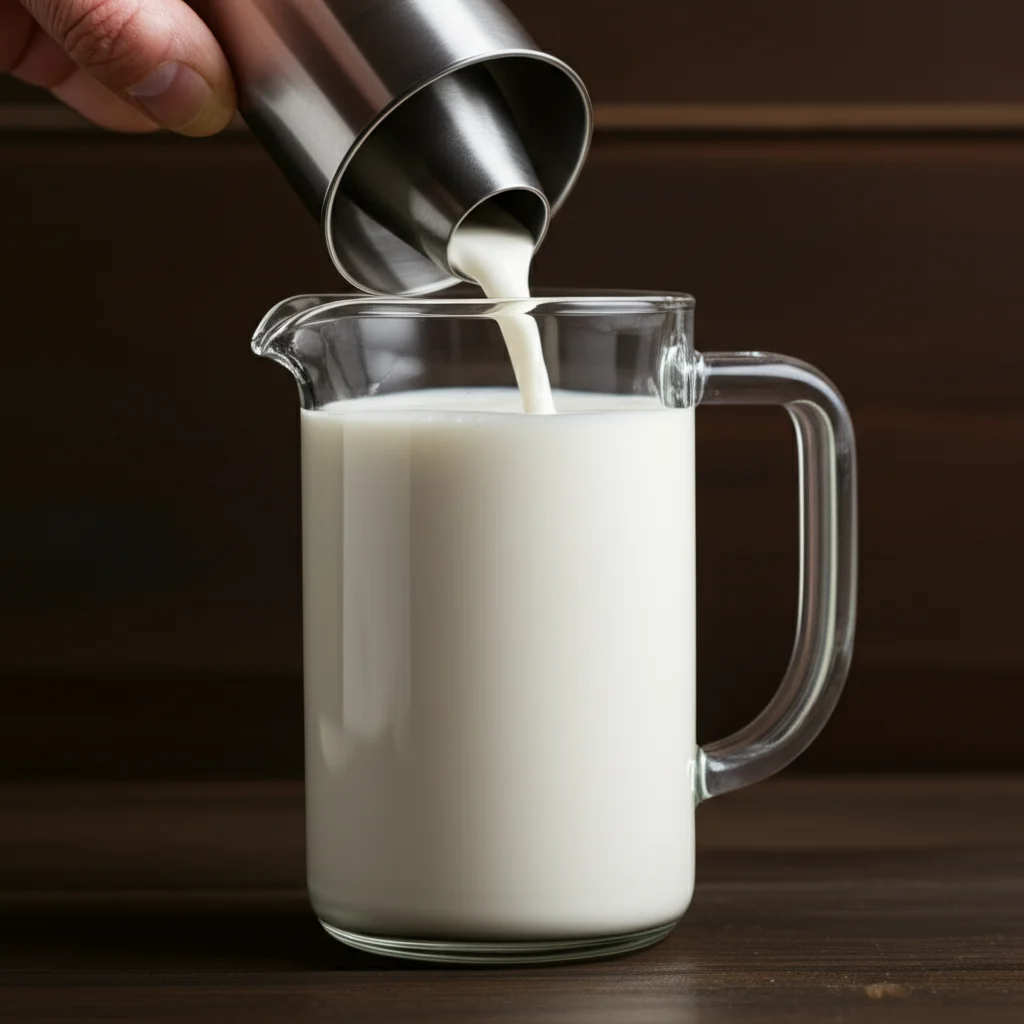· Todd Martin · Kitchen Cleaning · 17 min read
How To Clean Burnt Copper Pan

How To Clean Burnt Copper Pan: Restore Its Shine
It happens to the best of us. One moment you are cooking, the next your beautiful copper pan has a dark, unsightly burnt mark. You might feel disappointed, thinking your pan is ruined forever. However, I am here to tell you that this is not true. You can absolutely restore your copper cookware.
Learning how to clean burnt copper pan surfaces is simpler than you think. This guide offers practical, easy-to-follow steps to bring back its original luster. We will explore various methods, from common kitchen ingredients to specific cleaning agents. Prepare to transform your tarnished pan back to its gleaming glory.
Takeaway:
- Copper pans can be cleaned effectively after burning using simple kitchen ingredients.
- Common methods involve acidic ingredients like vinegar or lemon combined with salt or baking soda.
- Regular maintenance prevents severe burning and keeps copper cookware looking new.
To clean a burnt copper pan, combine acidic agents like vinegar or lemon juice with abrasive compounds such as salt or baking soda. Apply the paste to the burnt area, let it sit, then scrub gently. Rinse the pan thoroughly to remove all residue and dry it immediately to prevent water spots.
Understanding Burnt Copper Pans: Why They Tarnish
Copper is a highly reactive metal. This quality is part of its charm and its challenge. When copper heats, it reacts with oxygen in the air. This reaction creates a dark layer on the surface.
This layer is copper oxide, commonly known as tarnish. Cooking food at high temperatures or leaving an empty pan on a hot burner speeds up this process. The food residue can also char and stick, making the burnt areas even more difficult to clean. This tarnish and burnt-on food demand specific cleaning methods.
Maintaining copper pans requires understanding their unique properties. Unlike stainless steel, copper shows discoloration easily. Burnt food and heat spots are common issues. Fortunately, most of these marks are superficial. They do not permanently damage the pan’s functionality. With the right approach, you can lift away even stubborn burnt areas.
I have found that patience is key when dealing with burnt copper. Rushing the cleaning process can scratch the pan. Copper is a soft metal, so abrasive scrubbers can cause damage. Using gentle, natural solutions often yields the best results without harming the pan’s surface. Let the cleaning agents do most of the work for you.
Essential Supplies for Cleaning Burnt Copper
Before you begin to clean burnt copper pan surfaces, gather your tools. Having everything ready makes the cleaning process smooth. You likely have most of these items in your kitchen already. This preparation saves time and ensures you can finish the job without interruption.
Here is a list of supplies I recommend for effectively cleaning copper:
- White Vinegar: This acidic liquid works wonders on tarnish and some burnt marks. Its acidity helps to break down oxidized copper. It is also excellent for general cleaning around the house.
- Salt (Table Salt or Kosher Salt): Salt acts as a gentle abrasive. It helps scrub away grime without scratching the copper. The granules combine with acidic cleaners to form a powerful paste.
- Baking Soda: A versatile cleaner, baking soda is mildly abrasive and helps absorb odors. It also reacts with acids to create a fizzing action that lifts burnt residue.
- Lemon Halves: The citric acid in lemons is another fantastic natural cleaner for copper. They also leave a fresh scent. You can use lemon juice or rub the pan directly with a lemon half.
- Ketchup: Yes, ketchup! The acid from the tomatoes and vinegar in ketchup can work surprisingly well on light tarnish. It is a simple trick worth trying for minor discoloration. You can learn more about how to clean copper with ketchup to see this method in action.
- Soft Cloths or Sponges: Always use non-abrasive materials. Microfiber cloths or soft sponges are ideal. Steel wool or harsh scrubbers will scratch the delicate copper finish.
- Warm Water: Used for rinsing and sometimes for soaking. Warm water helps loosen burnt food particles.
- Mild Dish Soap: For a final wash after cleaning the burnt areas. This removes any residue from the cleaning agents.
Having these items on hand means you are ready to tackle any burnt copper challenge. Each ingredient plays a specific role in restoring your pan. Choosing the right supplies protects your cookware while getting it clean.
Method 1: The Vinegar and Salt Power Scrub for Burnt Copper
One of the most effective ways to clean burnt copper pan interiors and exteriors involves white vinegar and salt. This method relies on the acidic properties of vinegar combined with the gentle abrasion of salt. I find this combination excellent for removing stubborn burnt food and tarnish. It is a go-to solution for many common pan cleaning issues.
Here are the steps to follow for this powerful scrub:
- Prepare the Pan: First, if there’s any loose burnt food, scrape it off gently with a wooden or plastic spatula. Do not use metal tools as they can scratch the copper. If the pan is very burnt, you might want to consider soaking it in warm water with a little dish soap for 15-30 minutes first. This can loosen some of the burnt residue.
- Make the Paste: Pour about a quarter cup of white vinegar into a small bowl. Add enough table salt to create a thick paste. The paste should be gritty but spreadable. You can adjust the amounts as needed depending on the size of the burnt area.
- Apply the Paste: Using a soft cloth or sponge, apply the paste generously to the burnt areas of your copper pan. Ensure the entire burnt surface is covered. Let the paste sit on the burnt marks for at least 10 to 15 minutes. For very stubborn burns, you can leave it on for up to an hour. The acid needs time to work on the tarnish and carbonized food.
- Gentle Scrubbing: After letting it sit, gently scrub the burnt areas using the same soft cloth or sponge. You will notice the burnt residue and tarnish starting to lift away. For particularly stuck-on grime, you can sprinkle a little extra salt directly on the pan and use a lemon half as a scrubbing tool. The acidity of the lemon boosts the cleaning power.
- Rinse and Dry: Once the burnt marks are gone, rinse the pan thoroughly with warm water. Make sure to remove all traces of the salt and vinegar. Dry the pan immediately with a clean, dry cloth to prevent new water spots or tarnish from forming. Drying is a crucial step in maintaining a shiny finish.
This method works wonders for common burnt food scenarios. For other challenges, such as how to clean burnt sugar from a pan, similar acidic principles apply. Always remember to be gentle with your copper.
Method 2: Baking Soda and Lemon for Gentle Burnt Pan Cleaning
When you need a slightly gentler approach to clean burnt copper pan surfaces, baking soda and lemon are a fantastic combination. This method is especially good for lighter burns or for maintaining the pan’s overall shine. The mild abrasive quality of baking soda combined with the citric acid in lemon juice creates a powerful, natural cleaner. I often turn to this method for daily maintenance.
Here is how to use baking soda and lemon to clean your copper pan:
- Preparation is Simple: Ensure your copper pan is dry. You do not need to pre-soak for this method unless the burnt residue is extremely thick. A clean, dry surface helps the baking soda adhere better.
- Sprinkle and Squeeze: Sprinkle a generous amount of baking soda directly over the burnt area of your copper pan. You want a good, visible layer. Then, take half a lemon and squeeze its juice over the baking soda. The mixture will fizz and bubble slightly as the acid reacts with the baking soda. This reaction helps lift the burnt particles.
- Rub and Wait: Use the lemon half itself or a soft cloth to rub the baking soda and lemon juice into the burnt spots. Continue rubbing gently for a few minutes. Then, let the mixture sit on the pan for 20 to 30 minutes. For tougher burns, I sometimes let it sit longer, up to an hour. The longer contact time allows the natural acids to penetrate the burnt layers.
- Gentle Scrubbing: After the waiting period, use the lemon half or a soft sponge to scrub the burnt areas in circular motions. You will see the dark marks begin to disappear. The baking soda provides the necessary friction without scratching the copper. If needed, add a little more baking soda or lemon juice.
- Rinse and Shine: Once the burnt residue is gone, rinse the pan thoroughly with warm water. Make sure all baking soda is removed. Dry the pan immediately with a clean, soft cloth. Polishing it gently as you dry will bring out its natural luster. This method is also useful for general cleaning, such as how to clean oven with baking soda, highlighting its versatility.
This baking soda and lemon technique is not only effective but also uses non-toxic ingredients. It leaves your copper pan clean and sparkling. It is a good choice for those who prefer natural cleaning solutions.
Method 3: Ketchup’s Surprising Role in Copper Restoration
You might be surprised to hear that ketchup can be a secret weapon for how to clean burnt copper pan surfaces. This seemingly unusual method works due to the acidic components present in ketchup, primarily vinegar and tomato acid. While it might not be the most potent solution for heavily charred pans, it works wonderfully for lighter tarnish and minor burnt marks. I have personally used this for quick touch-ups.
This is a fun and simple way to get your copper pan looking better:
- Apply Ketchup: Squeeze a generous amount of ketchup directly onto the burnt areas of your copper pan. You want enough to completely cover the affected spots. Do not skimp on the ketchup.
- Spread and Sit: Use a soft cloth or paper towel to spread the ketchup evenly over the burnt marks. Ensure good coverage. Let the ketchup sit on the copper for at least 10 to 30 minutes. For tougher spots, you can leave it for several hours, or even overnight. The acids need time to react with the copper tarnish and break down the burnt residue.
- Rub Away: After the waiting period, use a soft cloth or sponge to gently rub the ketchup into the pan. You should see the tarnish and burnt marks start to lift away with minimal effort. The slight thickness of ketchup helps it cling to the surface, allowing the acids to work longer.
- Rinse Thoroughly: Once clean, rinse the pan completely under warm running water. Ensure all traces of ketchup are gone. Ketchup can be sticky, so a good rinse is important.
- Dry Immediately: As with all copper cleaning, dry the pan immediately with a clean, soft cloth. This prevents water spots and helps maintain the newly restored shine. This method is so effective, there’s even a dedicated guide on how to clean copper with ketchup.
Ketchup might seem unconventional, but it is an accessible and easy way to address burnt marks on copper. It is perfect for those quick clean-ups or when you want a mild solution. It is also a safe option for regular copper pan care.
Tackling Stubborn Burnt-On Residue on Copper
Sometimes, a burnt copper pan has more than just tarnish; it has truly stubborn, carbonized residue. This can feel daunting, but do not give up on your pan. There are ways to handle these tougher messes. These methods require a bit more effort, but they can save your pan. I have faced these challenges myself and found success with a combination of soaking and specific cleaning agents.
Here’s how to tackle truly stubborn burnt-on residue:
- Boil and Soak: For very heavy burnt-on food, start by adding about an inch of water to the pan. Add a few tablespoons of white vinegar and a generous amount of salt. Bring this mixture to a boil on the stove. Let it simmer for 5-10 minutes. Turn off the heat and let the mixture cool completely. The boiling helps loosen the burnt particles, making them easier to remove. This is a common technique for various burnt pans. For instance, similar principles apply when learning how to clean burnt rice from pot.
- Baking Soda Paste for Extra Power: Once the pan is cool, drain the water. Create a very thick paste using baking soda and a small amount of water or lemon juice. Apply this paste directly onto the stubborn burnt areas. Ensure a thick layer. Let this paste sit for several hours, or even overnight, for maximum effect. The longer contact time helps break down the carbonized food.
- Gentle Scraping (if needed): After soaking and applying the paste, use a wooden or plastic scraper to gently push off the softened burnt residue. Be extremely careful not to scratch the copper. Sometimes, a credit card edge or a silicone spatula works well for this. Avoid metal tools.
- Scrub with Finesse: Now, use a non-abrasive sponge or a soft brush. Dip it in a mixture of warm water and a little dish soap. Gently scrub the remaining residue. You might need to reapply a small amount of the baking soda paste and continue scrubbing. Patience is important here.
- Final Rinse and Polish: Rinse the pan thoroughly with warm water. Ensure all cleaning agents and burnt particles are gone. Dry the pan immediately with a clean, soft cloth. For extra shine, you can use a commercial copper cleaner or a homemade solution of lemon juice and olive oil for a final polish. This comprehensive approach helps even with serious burnt messes, including those on the bottom of the pan.
Remember, consistency and patience are your best tools for tackling these difficult burnt residues. Do not use harsh chemicals or abrasive pads, as they will harm your copper.
Preventing Future Burnt Marks and Maintaining Copper Shine
Cleaning a burnt copper pan can be a chore, so preventing burns is always better. Proper care and maintenance will keep your copper cookware beautiful for years. I have learned that a little effort regularly saves a lot of work later. These tips help you avoid burnt marks and maintain that desirable copper shine.
Here are my essential tips for preventing future burnt marks:
- Mind Your Heat: Copper heats very quickly and evenly. This is why chefs love it. However, it also means you need lower heat settings than with other types of pans. Avoid using copper pans on high heat for extended periods, especially when empty. A medium-low setting is usually sufficient for most cooking.
- Always Use Fat: When cooking, always add oil, butter, or another cooking fat to the pan before it heats up. This creates a barrier between the food and the pan surface. It helps prevent food from sticking and burning.
- Avoid Empty Heating: Never leave an empty copper pan on a hot burner. This is a common cause of severe burning and discoloration. The pan can heat up very quickly and discolor even before you notice.
- Deglaze Quickly: If food starts to stick or brown excessively, deglaze the pan immediately with a liquid like water, broth, or wine. This helps lift stuck-on bits before they burn. For burnt oil, the approach for how to clean burnt oil from stainless steel pan can also provide useful insights on tackling similar residues.
- Regular Cleaning: Do not let burnt food or tarnish build up. Clean your copper pans immediately after each use. A simple wash with warm water and mild dish soap is usually enough for daily cleaning. For light tarnish, use a lemon half with a sprinkle of salt. Regular cleaning prevents minor issues from becoming major ones.
- Hand Wash Only: Copper pans are not dishwasher safe. The harsh detergents and high heat of a dishwasher will damage the copper finish and potentially cause pitting. Always hand wash your copper pans.
- Dry Immediately: After washing, always dry your copper pans completely with a soft cloth. Air drying can lead to water spots and renewed tarnish. This quick step is crucial for maintaining shine.
- Occasional Polishing: For exterior shine, polish your copper pans occasionally with a commercial copper polish or a homemade solution of lemon juice and baking soda. This keeps the exterior looking brand new. Maintaining the pan’s overall condition will make it less prone to future damage.
By following these simple rules, you can keep your copper pans in pristine condition. They will remain a beautiful and functional part of your kitchen for many years. Prevention is key to preserving the life and beauty of your copper cookware.
FAQs About Cleaning Burnt Copper Pans
Can I use steel wool or abrasive scrubbers on burnt copper? No, you should never use steel wool or harsh abrasive scrubbers on copper pans. Copper is a soft metal and these materials will scratch its surface. This causes permanent damage to the pan’s finish. Always use soft cloths, sponges, or natural materials like lemon halves for scrubbing.
How often should I clean my copper pans for best results? You should clean your copper pans after every use with mild soap and water. For burnt marks or tarnish, address them immediately. A deeper clean using vinegar/salt or baking soda/lemon can be done as needed, perhaps once a month or when discoloration becomes noticeable.
Why does copper tarnish or burn so easily? Copper tarnishes because it reacts with oxygen in the air, creating a dark oxide layer. This reaction speeds up with heat, leading to burning and discoloration during cooking. Burnt food residues also contribute to stubborn marks. Its high heat conductivity means it heats fast, causing quick burning if unattended.
Is it safe to cook in a burnt copper pan? Cooking in a pan with burnt residue is generally safe if the inside is not heavily damaged. However, burnt food particles can transfer unwanted flavors to your meals. Also, the pan’s heating efficiency can be reduced. It is best to clean burnt areas to ensure optimal cooking performance and food taste.
What is the best way to prevent burning copper pans? To prevent burning, always cook on low to medium heat settings. Copper conducts heat very well, so high heat is rarely needed. Always add cooking oil or fat before heating the pan. Never leave an empty copper pan on a hot burner. Clean spills quickly.
Can I put my copper pan in the dishwasher? No, you should never put copper pans in the dishwasher. Dishwasher detergents are too harsh and can cause discoloration, pitting, and damage to the copper’s surface. The high heat in a dishwasher can also ruin the pan’s finish. Always hand wash copper cookware.
Conclusion
Cleaning a burnt copper pan might seem like a challenging task. But as you have seen, it is entirely possible with the right methods and a little patience. Whether you use the classic vinegar and salt combination, the gentle baking soda and lemon paste, or even the surprising ketchup trick, your copper cookware can regain its beautiful luster. I truly believe anyone can achieve great results by following these simple steps.
Remember to choose the method that best suits the severity of the burn. Always prioritize gentle scrubbing tools to protect the copper surface. By understanding why copper tarnishes and how to prevent future burnt marks, you extend the life and beauty of your pans. Keep your copper pans gleaming in your kitchen. With these tips, you are ready to tackle any burnt copper pan and keep your kitchen essentials looking their best.
- burnt copper pan
- copper pan cleaning
- burnt cookware
- restore copper
- kitchen cleaning tips
- home cleaning
- pan care





